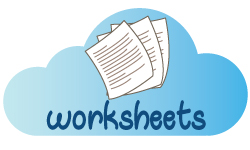What Are Prepositions? | Rules and Examples
- Grammar Lessons >
- Prepositions
Overview of Prepositions:
- What Is a Preposition?
- Prepositions - Video Lesson
- A Handy List of Prepositions
- Types of Prepositions-A
- Types of Prepositions-B
- Is That a Preposition or Conjunction?
- Is That a Preposition or Adverb?
- Collocations with Prepositions
- The Great Preposition Myth
- At, On, and In
- Set Prepositions
- Prepositions - Quiz
What Is a Preposition?
A preposition is used to link a noun or a pronoun in a sentence to another element in it. "Pre position" means place before; no wonder prepositions are placed before a noun or pronoun most of the time.
Examples:
Kevin is eating at the restaurant.
Bob and Martha are with him.
Quick tip: A preposition must have an object; in some cases, the object may not be placed right after the preposition.
Examples:
I bought it at the store.
Who did you talk to? (The object of preposition is not right after the preposition; it comes at the beginning of the sentence: talked to whom.)
A Handy List of Prepositions
Click on the Circles to Spot the Six Prepositions
Types of Prepositions-A
Based on how many words are in it, a preposition can be simple, double, or compound.
Simple Prepositions
These are one-word prepositions. Examples of simple prepositions are at, in, on, etc. This type is the most common type of prepositions.
Examples:
Who is at the door?
I'm in a meeting.
The cat is hiding under the table.
Double Prepositions
These prepositions have two words put together to form one preposition. Examples of double prepositions are into, up to, out of, etc. We find this type of prepositions quite a lot.
Examples:
It is now up to you to decide.
Little Sara will turn into a lady one day.
Compound Prepositions
This type of prepositions contains two or more words. Compound prepositions are mostly used in formal English. Examples are in addition to, on behalf of, etc.
Examples:
In addition to a bike, Mike has a car.
Aside from baseball, I hardly watch any television.
Types of Prepositions-B
Based on their function, prepositions can be divided into three categories: prepositions of time, prepositions of place, and prepositions of direction.
Prepositions of Time
A preposition of time is a preposition that indicates a specific time.
Examples:
Can you finish the assignment before dinner?
Dad landed in New York at 9 am.
Prepositions of Place
A preposition of place is a preposition that indicates a specific place.
Examples:
Mom works in New York.
Jason is sitting on the chair.
Prepositions of Direction
A preposition of direction is a preposition that indicates a specific direction.
Examples:
The bus is going toward the city center.
Ralph is walking down the street.
Useful tip: Not every preposition can be categorized under one of the three types: time, place, or direction.
Examples:
despite, without, etc.
Quick tip: Using different prepositions in the same sentence can change the meaning.
Look at the two sentences:
Alex works for Max Solutions.
Alex works with Max Solutions.
The first sentence means Alex is employed by Max, and the second one means he works in association with them on equal footing, and not necessarily employed by them.
Is That a Preposition or Conjunction?
Students face a bit of a struggle dealing with words that can function as both prepositions and conjunctions. Examples of such words include since, before, until, etc. The point here is if the word is followed by a clause, it's a conjunction. If what we have is a noun phrase and not a clause, it's a preposition.
Examples:
After the meeting was over, I went to the gym. (conjunction, clause)
After the hours-long meeting, I went to the gym. (preposition, noun phrase)
Is That a Preposition or Adverb?
There are certain words that can be both prepositions and adverbs. The watchword is if there is an object after the word, it's a preposition. If not, it's an adverb.
Examples:
I am waiting outside the building. (preposition, object of preposition)
I am waiting outside. (adverb, no object of preposition)
Collocations with Prepositions
It's worthwhile for children to be equipped with a list of common adjectives + prepositions collocations. Here are a few.
Adjective + Preposition Collocations
It's worthwhile for children to be equipped with a list of common adjectives + prepositions collocations. Here are a few.
fond ofworried aboutsimilar tosurprised atinterested inweary ofresponsible fordisappointed withVerb + Preposition Collocations
hinder fromrefrain fromcope withtend todiffer fromwait forsucceed inbenefit from
The Great Preposition Myth
Many people believed, and many still believe that a sentence can't end with a preposition; they base their argument on the rule that a preposition is always followed by a noun or pronoun. This, however, is not true.
Look at the sentences:
This is something I'm interested in it. (incorrect)
This is something I'm interested in. (correct)
The first sentence sounds unnatural and therefore is not correct.
Useful tip: Different from Vs different than
The phrase "different than" is widely used in American English. Users of traditional British English avoid using "different than" at any cost. We recommend that in written English, you stick to "different from" while in speaking, you can choose as you wish.
At, On, and In
At is used:
to refer to a position or location
Example:
Kevin is temporarily sitting at Carl's desk.
to refer to companies
Example:
Chris is now working at Dell.
to refer to activities that usually have a lot of people attending it
Example:
We are at the cinema.
to refer to a specific time
Example:
I will meet you at five.
to refer to shops
Example:
I bought this at Adam & Smith.
On is used:
to indicate a position on a surface
Example:
The book on my table.
to indicate a floor in a building
Example:
Our office is on the second floor.
to say that you are on public transport at the moment
Example:
I am on the train now.
In is used:
to refer to locations in a large area
Example:
We are based in London.
to refer to months, years, or longer periods
Example:
He was born in December.
Set Prepositions
There are many set prepositions that remain the same no matter how they are used.
Examples:
at : at night, at present, at the moment
in : in the morning, in the afternoon, in the evening
Take a Preposition Quiz Now!

Hone your skills using our free printable Preposition Worksheets.

